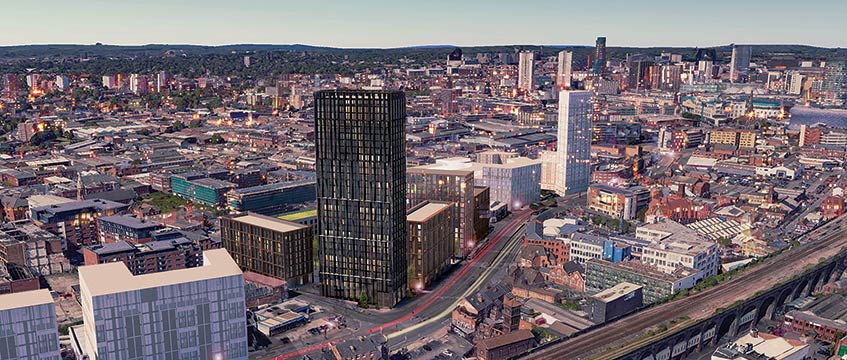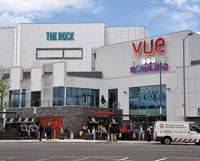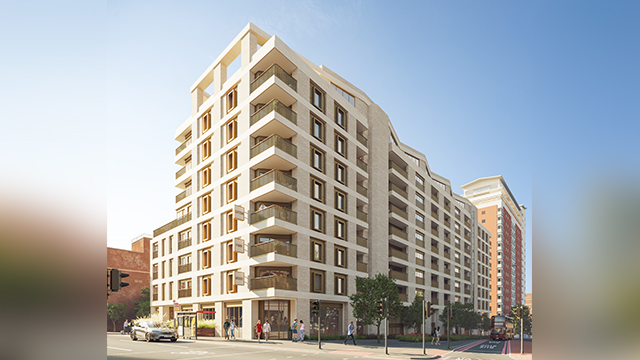The bright lights of Manchester are exerting an ever stronger pull on the North West’s shoppers and casting a gloomy shadow over the constellation of smaller towns that surrounds the city.
Footfall, occupancy levels and rents rose in Manchester city centre in 2011, while Rochdale fell 29 places in CACI’s retail rankings to 194 and Stockport was ranked as one of the UK’s worst-performing retail centres by the Local Data Company.
In Stockport, the collapse of a council-backed retail regeneration scheme has brought some stability, with new tenants, including Primark, signing up and others renewing leases. But in Rochdale, a long-delayed scheme has left the town centre in a state of uncertainty that is helping to drive tenants away.
Not all of outer Manchester is suffering, however. The opening of The Rock, in Bury, has helped to make it one of the most popular shopping destinations in the region.
Rochdale
When McDonald’s gives up on a town, you know things are bad. The US fast-food giant announced last November that it was quitting Rochdale. It leaves another empty unit in a town that is planning a large retail-led regeneration scheme, despite its main shopping centre, The Wheatsheaf, having gone into administration in 2010.
The council planned to acquire the Wheatsheaf, arguing that this would help to clear the way for the new scheme and that the centre would pay for itself in rental income from its remaining shops. But then the anchor tenant, TJ Hughes, went into administration last August and the council decided to think again.
The closure of TJ Hughes blocked the entrance into the Wheatsheaf from the bus station until the administrator agreed to create a tunnel through the empty store. “It’s not a replacement for a retailer, but at least it means it should be easier for people to now come in and do their shopping,” says the shopping centre’s manager, Martin Ballard.
Rochdale council seems to be undeterred by the retail exodus from the town and says it is intending to sign a development agreement with Genr8 later this year – “after the summer”, according to a spokeswoman – for a £150m scheme to provide 250,000 sq ft of retail and leisure. The council has assembled around 95% of the land, which includes the site of its own offices – new council offices are already under construction.
Genr8 is “still very much committed to the project”, according to partner Mike Smith. “We think it is the last piece in the jigsaw in terms of what the town needs.”
Despite being in talks with potential anchors, no tenant has been signed up, and while Genr8 has agreed funding with Kajima Partnerships to take it through the planning process, it does not intend to seek finance for construction until it has a solid base of tenants in place. “We can either fund construction with our partner Kajima or look for third-party funding, but that is a decision for another day,” says Smith.
Rochdale has received consent and £7m of central government funding for a bus interchange, which will link with a new extension of Manchester’s Metrolink and allow the existing bus station to be demolished to make way for the Genr8 scheme.
But locals say the new transport links will simply give Rochdale folk a quicker exit to other centres – Rochdale is just six miles from Bury and less than 10 miles from Manchester city centre. Rochdale council’s ambitions to build offices for itself in the town centre and create the biggest public square in Europe have been met with derision.
“Again Rochdale will be in the papers for the wrong reasons – come visit the largest square in Europe! As far as I am aware no-one has requested a concrete, grey, drab, record-breaking square,” wrote “Chill” on the Rochdaleonline forum.
Bury
Bury is one of the few Manchester satellites that is prospering. The town has several advantages: its 600-year-old market attracts 12m visitors pa, creating the “different offer” regeneration specialists are trying so hard to create elsewhere. Bury also has a large catchment area, good transport links and its retail developments are well connected.
The opening of the £350m The Rock retail centre in 2011, after Hammerson took over asset management of the scheme from Thornfield Ventures, has helped draw in shoppers from Rochdale and Bolton, and lifted the town by 59 places to number 126 in CACI’s retail rankings.
The opening of The Rock caused anxious times for Scottish Widows, owner of Bury’s long-established retail mall, Mill Gate, not least because Marks & Spencer relocated from Mill Gate to The Rock. But the two schemes are working well together: shoppers from Bury market pass through Mill Gate to get to The Rock and the older centre has clearly benefited, with Christmas 2011 footfall up by 15% on the previous year.
But despite the fact that The Rock was nearly 90% let when it opened, Hammerson has so far declined to take up the option to buy it.
Stockport
GVA’s Mark Rawstron bridles at the Local Data Company’s assessment of Stockport as one of the UK’s worst performing towns. GVA took over management of Stockport’s Merseyway scheme after it went into administration in 2009 and is justly proud of the scheme’s performance. Primark’s arrival helped to boost footfall by 600,000 in 2011 to more than 10m.
Rawstron argues that the Local Data Company’s statistics cover the whole of the Stockport borough and do not reflect the success of the town centre itself, which is centered on the Merseyway shopping centre.
Merseyway’s revival owes much to the collapse three years ago of a £500m Lend Lease scheme to redevelop the Bridgefield area of the town centre, which had been backed by the council. The proposal for the 19-acre scheme of retail, residential and leisure facilities had left the rest of the town in suspension, with retailers declining to renew leases, and helped to push Merseyway over the edge, say agents.
“The collapse of the Bridgefield scheme was the best thing that could have happened to Stockport,” says Rawstron.
But CBRE’s Nick McAllester says that while Merseyway is doing well, the remainder of the town centre is still languishing: “Princes Street has been secondary for a long time, now its becoming tertiary,” he says.
Manchester
CACI listed Manchester as one of only three UK cities expected to have seen a rise in retail spend in 2011 – the others were London and Newcastle upon Tyne.
The city suffered a dip in fortunes early in the recession, with shops falling vacant even on prestigious King Street, but the centre is now almost fully let. Demand for the Arndale Centre is so strong that zone A rents are up to £250 per sq ft, compared with prelets of £230 five years ago, according to CBRE’s McAllester.
Only Aviva’s Triangle is failing to keep the pace. The Edwardian building was refurbished after the IRA bomb in 1996 and opened in 2000, but it has always struggled to retain occupiers, more so since the redevelopment of Selfridges and the Arndale effectively cut it off from the city centre.
Manchester city council is hoping that reverting its name back to the Corn and Produce Exchange and rebranding it as The Carnaby Street of the North, will restore its fortunes.











